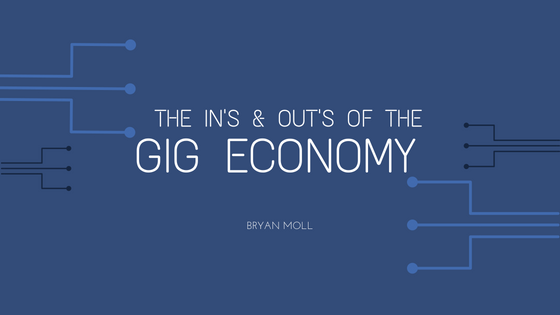The term “gig economy” has become increasingly popular over the past few years, but is still a relatively new idea for some people in the current workforce. The gig economy is defined as “an environment in which temporary positions are common and organizations contract with independent workers for short-term engagements”. Essentially, it’s a way for people to make a full time job out of freelancing for different companies, and possible side hustles.
One of the things that makes the gig economy so alluring is the convenience it provides to the people within the community. The workforce of today is increasingly gearing itself towards a mobile workforce. Due to the amount of resources we have at our disposal, most work can be completed remotely. This provides freelancers with the flexibility to make their own schedules and call the shots.
Another positive aspect of these communities is the increased opportunity they provide. Many freelancers are able to earn more money in a shorter amount of time due to the flexibility of the gigs. It also allows them to take on more than one gig at one time should they so choose.
Freelancers within the community can choose from a vast selection of temporary jobs, usually provided to them through a successful recruiting service. The gig economy relies heavily on these services to match the right people to the right communities within the economy itself. Since millenials have been shown to enjoy the fluctuation of different jobs, this is the perfect outlet for the entire generation to branch out and try something new.
There are many added benefits to employers as well. They are able to pay their freelancers more money due to offsetting the cost of insurance and the many other benefits that come with full-time employees. It also provides employers the flexibility and opportunity to bring a highly skilled freelancer onto their team to take their project to the next level, that they perhaps couldn’t afford to pay for a full-time position. This is also a perk for freelancers, who could potentially add another successful line to their resume.
The gig economy will be the future of the workforce. It’s predicted that by 2040, over 40% of people in the American workforce will be working as Independent Contractors through these communities. My advice? Get ahead of the wave, and start taking steps to reap the benefits of the gig economy today.

